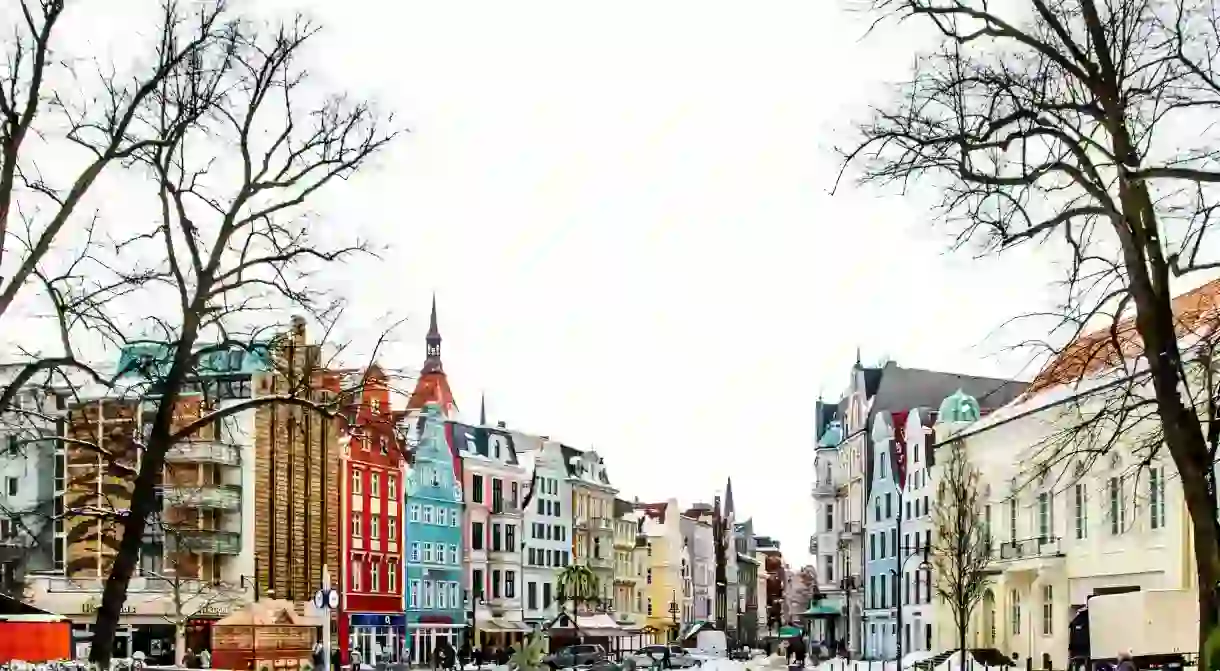The 20 Best Cities and Towns to Visit in Northern Germany

Northern Germany attracts tourists with its amazing diversity – futuristic cities with a rich past, such as Berlin and Hamburg, as well as a multitude of beautifully preserved historic towns. We take a look at the most exciting destinations in this part of the country.
Berlin, Germany
Architectural Landmark

Schwerin
Historical Landmark, Architectural Landmark

Rostock
University

Lübeck
Historical Landmark

Lübeck is a Unesco World Heritage Site whose existence can be traced back to the Middle Ages. It boasts the largest historic old town in Germany, which is lined by Renaissance guild houses and crisscrossed by romantic alleys. The symbol of Lübeck is the Holstentor, a fairytale brick gothic gate from the 15th century.
Bremen
Architectural Landmark

Stralsund
Historical Landmark

The skyline of the Hanseatic city of Stralsund is punctuated by a series of evocative brick-gothic constructions, including churches, the elegant town hall, and patrician houses. The Ozeaneum aquarium, part of the German Oceanographic Museum, is a favourite with families, and houses countless sea creatures, mostly from the North Sea and neighbouring Baltic.
Hamburg
Zoo

Sylt
Natural Feature

Kiel
Architectural Landmark

Binz
Architectural Landmark

The posh resort town of Binz, on the island of Rügen, promises powdery white sand, a lovely promenade and picturesque countryside – all of which prompt flocks of German sunseekers to head here for their summer holidays. Additionally, Binz has a series of marvellous architectural works, the most significant being Jagdschloss Granitz (Granitz Hunting Lodge) and the striking Prora complex.
Wismar
Architectural Landmark

The picturesque port city of Wismar on the Baltic Sea coast should not be missed if you’re interested in medieval architecture. The Unesco-listed city of Wismar has beautifully preserved its gabled patrician houses, Brick Gothic architecture and a massive medieval town centre. The colourful Old Hansa harbour is a particular highlight for a scenic stroll by the sea.
Wernigerode
Historical Landmark

Lüneburg
Historical Landmark

Quedlinburg
Architectural Landmark

Flensburg
The charming port town of Flensburg is among Germany‘s best-kept secrets. It enjoys a picture-perfect location at the tip of the Flensburg Fjord in northern Germany. While the waterside is Flensburg’s most photogenic spot, the town has a lot more to offer. The atmospheric old town, bustling shopping streets, 1,900 hectares of nature, beautiful ancient architecture and interesting museums contribute to make it an offbeat yet enjoyable city to explore.
Neumünster
Neumünster is a perfect weekend getaway if you wish to slow down and relax in the midst of nature, without running around sightseeing. Neumünster Zoo, set in a lush woodland, is home to over 135 species of animals, reptiles and birds, and is a very popular family destination for locals and tourists. Another must-visit spot is the sparkling Lake Einfelder, a great place to sunbathe, row or sail.
Eckernförde
Thanks to its rugged cliffs, sandy beaches, and the shimmering Lake Windebyer Noo, this port town seems to have been pinched right out of a glossy travel magazine. And if that’s not enough to convince you to visit, what seals the deal is the candy factory! Eckernförde is a popular holiday spot for Germans, especially north Germans, but it hasn’t yet caught the attention of hordes of tourists. So go before word gets out!
Husum
We challenge you to find a more picturesque maritime setting than Husum. At this adorable harbor town close to the Germany-Denmark border by the North Sea, narrow alleys crisscross past colorful fishermen’s houses, cozy taverns and tempting seafood restaurants. A walk along the dikes will reward you with spectacular views of the UNESCO-listed Wadden Sea mud flats. Other than bountiful nature, Husum also offers generous doses of culture in the form of 32 sites of architectural and historical interest.
Eutin
Eutin is wrapped by several lakes and verdant forests on all sides, which makes the town a sight that must be seen to be believed. The skyline of Eutin is dominated by the beautiful four-winged Eutin Castle. When in Eutin, make a point to visit the Bridegroom’s Oak, a tree that has been bringing singles together for over 500 years! Even if you are not looking for love, the tree is worth a visit for its sheer uniqueness and legendary status.
Korbach
Korbach was one of the few members of the Hanseatic League that were not located near a river or on the coast. Despite this, Korbach quickly rose as a significant link in the Hanseatic League thanks to its location at the crossing of two significant medieval trading roads leading from Cologne to Leipzig and from Frankfurt to Bremen. Today, travelers can walk down history along the Goldspur Korbach (Golden Path), connecting all the major historic and modern architecture in town. When in Korbach, do stop by at the award-winning Wolfgang Bonhage Museum housed in an ancient warehouse dating back to the Hanseatic era.













